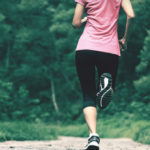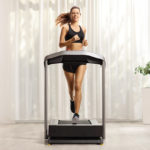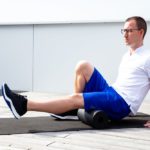Weightlifters often believe that they only need power, and the more they have of it, the more successful they will be. Power is essential, but weightlifting’s full potential can only be realized with high speed, coordination, mobility and adaptability. This article explains how adaptability and mobility are important in weightlifting.
I think that everyone who exercises wants to achieve results without injuries, feel good and stay healthy for as long as possible. This is possible, but you must remember that along with other physical qualities, it’s important to work on adaptability and mobility, developing them consciously while taking into account your personal traits.
Weightlifters often believe that the more power they have, the more successful they will be. Power is essential, but weightlifters can only achieve their full potential with the help of a team.
With excessive speed, coordination, mobility and adaptability.
Even the strongest athletes will be unable to perform a snatch accurately and quickly if their joints do not have the necessary range of motion and the muscles are not elastic enough.
Just a little idea. The ability to move a joint with its full amplitude is flexibility. It can be demonstrated using two different methods: with movement (dynamically), or without movement (statically). In statics, you can do it either actively or passively. Lively flexibility refers to the ability to stretch because the muscles of the antagonists are rigid. To stretch your chest muscles, you can move your arms out to the sides and activate your back muscle tissue by bringing your shoulder blades together.
Passive flexibility is the stretching of muscles that is done by external forces. There are many options: with an associate, specific machines, gravity, support, etc.
Depending on this, static and dynamic stretching strategies are chosen. Dynamic stretching is characterized by energetic, springy movements, rapid swings, with the largest amplitudes, at a fast tempo. The goal of dynamic stretching is to transfer motor abilities into working tone, and provide the flexibility necessary for explosive work. This type of flexibility is best used after a warm-up, pre-workout and during morning workouts. The number of repetitions that are beneficial in one motion is between 8-30.
Static stretching is holding certain positions for at least 30 seconds. The goal of static stretching is to relax the muscles, stretch the fibers and stop muscle spasms. Static stretching must be done correctly. It is important to breathe evenly and deeply, as well as to apply maximum stress to the joint or muscle space to ensure the muscle reacts accurately. The stress should be around 6.5 on a scale of 1-10. If not, the muscle will spasm reflexively to protect itself from severe pain or possible tear. Stretching is a good recovery exercise after training, before bed, and during rest days.
Flexibility is not something that is common but is specific to a particular joint or group of joints. Flexibility in a particular area or joint does not imply flexibility in another. Simply put, being able to sit with a snatch-grip overhead does not guarantee that everything will be the same in the clear grip.
Both external and internal factors are important for flexibility and mobility. The inner components are genetically set, so they can only be affected by the individual framework. This includes: the size and shape of the bones; the degree of conformity of articular surfaces; and the construction of muscles and ligaments.
It doesn’t matter how much you want to turn your elbows in a different direction, because that is the way the elbow joint functions.
Many exterior elements are influenced and can be used to increase flexibility.
Start with the exterior parts that are easier to change:
The temperature of the room where coaching is taking place. Stretching is easier at higher temperatures.
The time of day. The majority of people find it easier to be flexible during the day. The best time to be flexible is between 14:30 and 16:00.
Age. Teenagers tend to be more flexible than adults. As we age, the chemical makeup of bone and connective tissues changes, and the micro-tears in the muscle tissue are replaced by connective tissues that are less extensible. Stretching can help counteract this reduction in flexibility. A person who regularly stretches is also more flexible than a child at a younger age.
Gender. Women are more flexible than men, because their connective tissues contain more elastin fibres.
Gear. Choose clothing that doesn’t restrict your movement.
The stage of recovery after joint damage. You should be aware that a joint which has been damaged will have a smaller range of motion than one that is healthy.
The degree of general health. Flexibility increases with the level of general health. The degree of order of muscle fibers as well as the training of reflexes are responsible for this. This is especially felt when you return to training after a long break. You feel like a log.
Flexible components:
Joint type. The elbow and knee joints have structural limitations that limit their mobility. Do not forget the goal of stretching, which is not to increase mobility but to maintain stability and extend mobility. The knee, elbow and chest joints, as well as the cervical, require additional stability. Mobility in the shoulder, hip, ankle and wrist joints, as well as the thoracic spine.
The degree of conformity between the articular surfaces. The construction of the bone and the shape of the joint determines this parameter. This parameter is genetic. You can’t change it, but you should consider to determine your individual rate of joint mobility. Trying to go beyond it will result in injury. When comparing the angles and mechanics of Asian and European athletes, this problem is often brought up: It’s the differences in the position of the body during the deep squat which reveal the genetic features of the hip joint construction.
Bone construction. Genetics also determines the size, shape, and chemical composition. The ratio of inorganic and natural components in bones changes with age. The bones remain flexible, but become less elastic. Consequently, bones develop into extra fragile. This can be countered by power training.
Your health level is not the main factor that determines your muscle elasticity.
Tendons and ligaments have elastic properties. Tendons attach muscle tissue to bones. Their size is genetically determined. The ligaments are much more elastic. They are primarily responsible for stabilizing joints, and should not be stretched. The fasciae cover organs, blood vessel, nerves and penetrate muscle tissue. They also maintain the overall stability of the body. Myofascial release techniques are a vital and attainable way to influence them.
Pores, skin and elasticity. Flexibility is restricted barely. It’s worth remembering, however, that the injury results in the replacement of dermis tissue with scar tissue which isn’t as elastic. This is a concern for anyone who has recently had surgery or been injured. Postpone stretching in the area of injury.
Flexible movement allows us to move safely and comfortably. It must be taught consciously while taking into account individual traits, innate parameters and external circumstances. Active flexibility is harder to develop than passive. Not only does it require passive flexibility to achieve an initial extended place, but it also requires muscle energy to be able to keep and maintain that place. According to research, however, it is more closely related to improving athletic performance. You should be aware that some joints require more mobility than others. The right amount of flexibility is achieved by combining agility with stability.
You is perhaps keen on:
Clear and Jerk Program
Clear Coaching Program
Snatch program
jerk program
Leg exercise program











